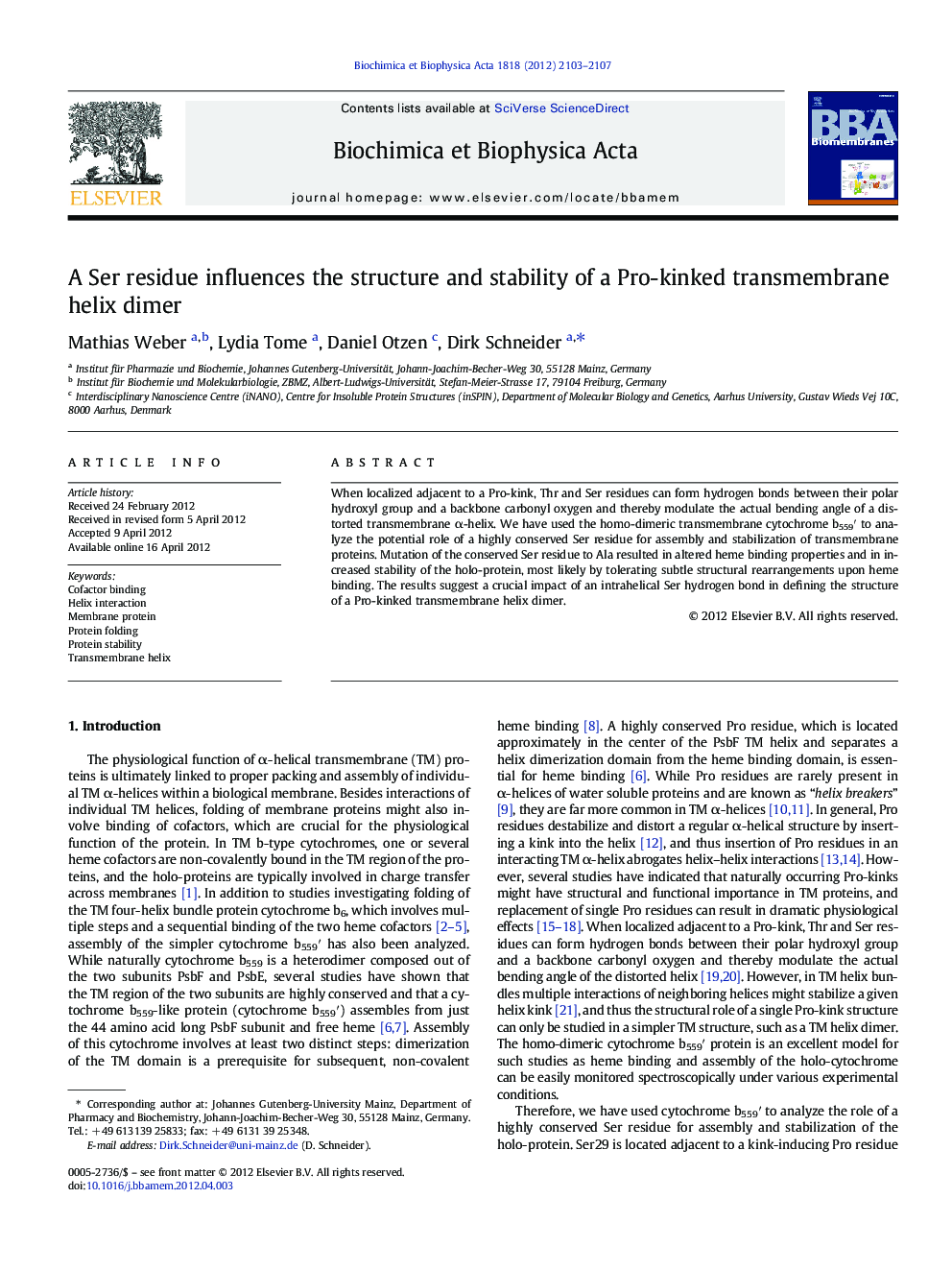| Article ID | Journal | Published Year | Pages | File Type |
|---|---|---|---|---|
| 1944434 | Biochimica et Biophysica Acta (BBA) - Biomembranes | 2012 | 5 Pages |
When localized adjacent to a Pro-kink, Thr and Ser residues can form hydrogen bonds between their polar hydroxyl group and a backbone carbonyl oxygen and thereby modulate the actual bending angle of a distorted transmembrane α-helix. We have used the homo-dimeric transmembrane cytochrome b559′ to analyze the potential role of a highly conserved Ser residue for assembly and stabilization of transmembrane proteins. Mutation of the conserved Ser residue to Ala resulted in altered heme binding properties and in increased stability of the holo-protein, most likely by tolerating subtle structural rearrangements upon heme binding. The results suggest a crucial impact of an intrahelical Ser hydrogen bond in defining the structure of a Pro-kinked transmembrane helix dimer.
Graphical abstractFigure optionsDownload full-size imageDownload high-quality image (145 K)Download as PowerPoint slideHighlights► PsbF forms a dimeric TM structure. ► A pro-kink in the TM helix is crucial. ► The geometry of the pro-kink is influenced by an adjacent serine residue. ► Replacement of the serine residue influences the stability of the holo-protein.
